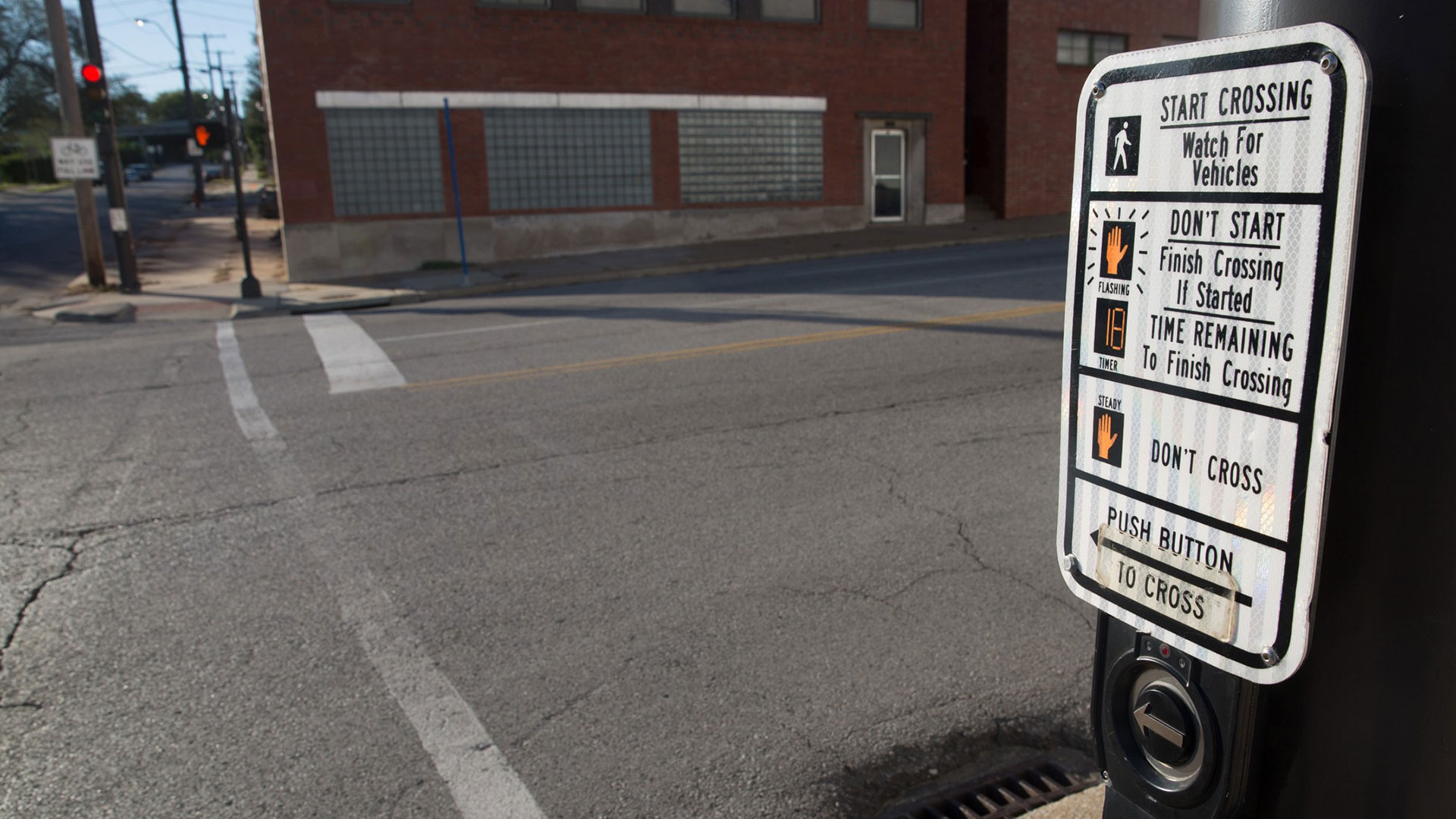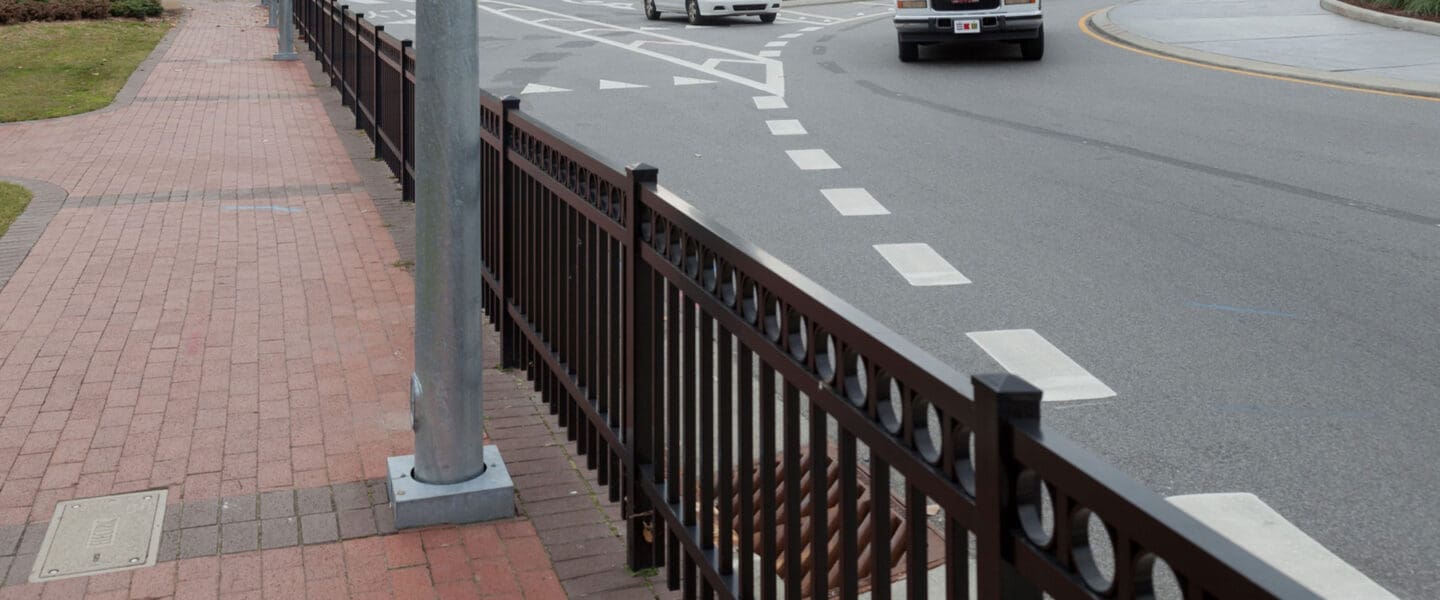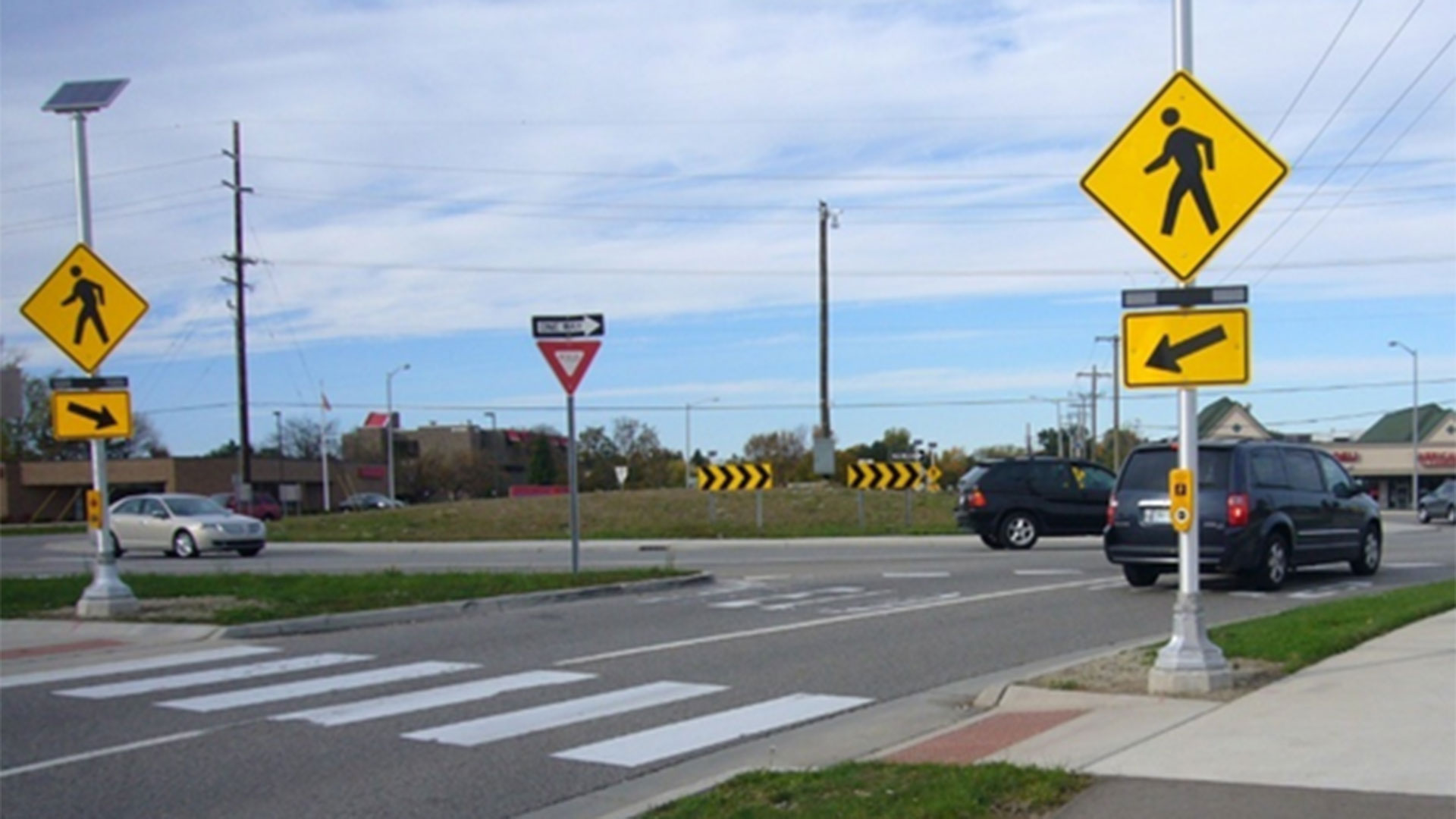November 29, 2023
In August of this year, the United States Access Board issued the long-awaited final rule on Public Right-of-Way Accessibility Guidelines (PROWAG), and it went into effect on September 7, 2023. PROWAG was developed to support the Americans with Disabilities Act (ADA) and the Architectural Barriers Act (ABA) by addressing access to sidewalks, streets, crosswalks, curb ramps, pedestrian signals, on-street parking, and other components of public rights-of-way.
The release of the final rule was big news, because it encompassed more than 20 years of research and revision! The journey to PROWAG started in 1999 with the convening of the Public Rights-of-Way Accessibility Advisory Committee (PROWAAC). In 2001, PROWAAC submitted a final report to the U.S. Access Board and the following year, draft guidelines were released for public comment. The next two decades contained multiple public comment periods, and of course, a significant amount of transportation research was conducted during that time, all of which has informed the final rule.
At this time, PROWAG has yet to be adopted by the U.S. Departments of Transportation and Justice, and thus is not yet enforceable. However, the Department of Transportation announced in its regulatory agenda that it intends to issue a Notice of Proposed Rulemaking (NPRM) to adopt the PROWAG into its regulations in 2024. And even while the timeline for adoption remains undefined, the final rule on PROWAG represents best practices and thus is critical for many projects today.
Even while the timeline for adoption remains undefined, the final rule on PROWAG represents best practices and thus is critical for many projects today.
In August, we released an article summarizing what was new and what was revised in the final rule compared to previous drafts of PROWAG. Here, we’re talking about what PROWAG means for the design and implementation of your projects. If you’re curious how PROWAG might apply to the projects within your purview, read on!

The journey to the final rule on PROWAG was over 20 years in the making, beginning in 1999 with the convening of the Public Rights-of-Way Accessibility Advisory Committee (PROWAAC).
When Does PROWAG Get Triggered?
According to the final rule, PROWAG applies to two broad categories of projects:
- All newly conducted pedestrian facilities
- All altered portions of existing pedestrian facilities
This definition begs a few questions. Firstly, is there anything within the public right-of-way that PROWAG does not cover? According to the final rule, PROWAG does not apply to pedestrian facilities within vaults, tunnels, and other spaces used only by service personnel. But as you can see, it applies to the majority of pedestrian facilities.
Secondly, what is the threshold for an “alteration” that would require a facility to be brought up to PROWAG minimum standards? We’re not lawyers, but we (and many others) have reviewed the final rule closely and observed that it does not list specific triggers that define an alteration. It’s possible that adoption by the Departments of Transportation and Justice will bring more clarity. But currently, it appears that agencies adopting PROWAG into their standards and guidelines may establish their own thresholds.

The threshold for an “alteration” that would require a facility to be brought up to PROWAG minimum standards does not appear to be defined in the final rule, which leaves this determination up to agencies. Photo: Lee Rodegerdts.
So, How Do I Know When to Use PROWAG?
In making determinations about when PROWAG must be consulted, we recommend asking: does the change to the facility substantially change the pedestrian experience? If so, pedestrian facilities should be updated to PROWAG specifications. This could range from implementing a leading pedestrian interval to moving a push button to adding separated bicycle facilities. Each of these changes impacts pedestrians, and particularly, makes a difference for pedestrians who are blind or have low vision, or people with physical or other disabilities.
In making determinations about when PROWAG must be consulted, we recommend asking: does the change to the facility substantially change the pedestrian experience?
When it comes to accessibility standards, decisions are not quantifiable as we commonly do with other safety-related decisions. In many cases we prioritize improvements to maximize the benefit to the greatest number of people. Here, we are considering users who are not the majority but have unique and important experiences. Improvements that are intended to improve safety for the majority of people must be made accessible and usable by everyone. Another way to say all this is simply, do the right thing for the people who will be using your facilities.
Challenges to Implementing PROWAG
Is it a big lift to get a roadway or intersection up to PROWAG standards? That varies significantly based on what facilities are in existence. Some elements of the final rule are unchanged from prior drafts and thus, are ideally already being put into practice. But some of the guidance is new and will require bigger changes. Here are a few challenges agencies may run into as they seek to interpret and apply the final rule to their streets:
- Significant new requirements. In some places, the final rule introduces requirements not seen in prior drafts and guidance. For example, the final rule requires that where pedestrian crossings are not intended or prohibited, a physical barrier between the sidewalk and roadway must be provided either by landscaping or other nonprepared surface at least 24 inches width, or by a vertical edge treatment with a bottom edge no higher than 15 inches above the pedestrian circular path. This requirement used to just apply to roundabouts but was extended in the final rule to apply to closed crosswalks as well, which is a big change.

Where pedestrian crossings are not intended or prohibited, a physical barrier between the sidewalk and roadway must be provided either by landscaping or other nonprepared surface at least 24 inches width...

...or by a vertical edge treatment with a bottom edge no higher than 15 inches above the pedestrian circular path. Photos: Lee Rodegerdts.
- Absence of decision-making guidance. The final rule specifies minimum standards but in many places is silent on selecting the most appropriate treatment. At multilane roundabout crossings and multilane roundabout turn lanes, PROWAG directs that each multilane segment with a crossing shall have either a traffic control signal with pedestrian signal head, a pedestrian hybrid beacon, a pedestrian-actuated rectangular rapid flashing beacon, or a raised crossing. It does not, however, provide guidance on how to select the appropriate treatment. Thankfully, guidance does exist in NCHRP Research Report 1043, Guide for Roundabouts, which implements the method from NCHRP Research Report 834, Crossing Solutions at Roundabouts and Channelized Turn Lanes for Pedestrians with Vision Disabilities: A Guidebook—research that also informed elements of the final rule.
 This is the case for other elements of PROWAG, too: it’s important that the practitioner know what other research documents to reach for. (In case it’s helpful, just a few weeks ago, we published this chart of active transportation guidance documents and where each one falls within the project lifecycle!)
This is the case for other elements of PROWAG, too: it’s important that the practitioner know what other research documents to reach for. (In case it’s helpful, just a few weeks ago, we published this chart of active transportation guidance documents and where each one falls within the project lifecycle!)
Photo: Lee Rodegerdts.
- Construction tolerances. Maximum slopes and grades are challenging to build in the field if designed to the allowed limit. Because of this, many existing curb ramps are not ADA-compliant, and agencies are spending tens of thousands of dollars per corner to replace these ramps. It is good practice to design with slopes less than the maximum to allow for field variations during construction.
In addition, some of the guidance calls for solutions that to the best of our knowledge are not yet in wide use or do not yet exist. For example, if you temporarily close a sidewalk midblock for construction, how do you communicate that to a pedestrian who is blind or has low vision? The final rule states that signs identifying alternate accessible pedestrian access routes must comply with specifications regarding color, lettering, etc. for readability by people with limited vision, and non-visual means also need to be provided. Products that implement audible signing have come onto the market in recent years and are starting to see increased use by some agencies.
Another example is PROWAG’s requirement that pedestrians be communicated with when signals go into flash mode. The challenge here is that accessible pedestrian signals (APS) draw power from pedestrian signal heads and learn the intended pedestrian signal timing from operation of those same pedestrian signal heads. During flashing operations, the pedestrian signal heads are required to go dark per the MUTCD. As a result, not only do the APS not have a power supply from which to operate, they also do not know if the signal is operating in a planned flashing mode (controller flash), is in flashing mode because of an unintended malfunction (cabinet flash), or is completely out due to a power failure. This will involve rethinking how the APS are powered and how they communicate with the signal controller and cabinet.
These are all challenges that can, and should, be solved in the journey to elevate the standard for pedestrians. But it will take concerted effort and collaboration among decision-makers, engineers, planners, and vendors.
Where Do I Go From Here?
As we mentioned earlier, even though PROWAG is not yet enforceable, there are many reasons to learn it and use it now. It’s a documentation of best practices, it will be enforceable by law once adopted by the Departments of Transportation and Justice, and most importantly: it makes an important difference for pedestrians with unique experiences.
We’re continuing to review the final rule and learn all we can about successful application. This is new territory we’re navigating as a profession, and we’ll continue to share what we learn.
We also invite your feedback on what we’ve written here! We’re already received several insightful modifications, and welcome continued feedback from others who may have different experiences from ours so that we can make this information as accurate and useful as possible. Thank you to everyone who has already reached out with questions, comments, and suggestions!
